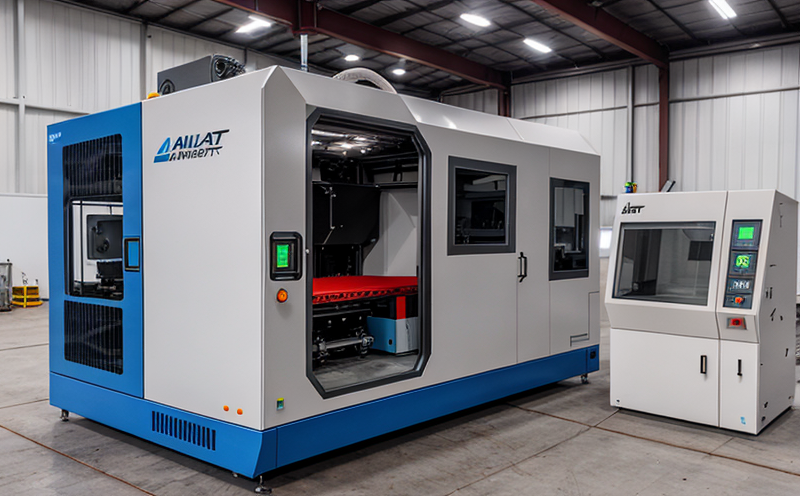ISO 52910 Design Guidelines Compliance Testing in AM
The ISO standard 52910 provides a set of design guidelines that are specifically aimed at ensuring the quality, safety, and reliability of parts manufactured using Additive Manufacturing (AM) processes. This service focuses on testing whether products designed according to these guidelines meet their specified performance criteria. Compliance with ISO 52910 is crucial for manufacturers who aim to ensure that their AM products can withstand real-world conditions while maintaining the integrity and safety required by regulatory bodies.
The complexity of AM technology necessitates a robust framework for design, testing, and certification. The guidelines in ISO 52910 address critical aspects such as geometry optimization, material selection, process parameters, and post-processing treatments to ensure that designs are not only manufacturable but also meet stringent quality standards. By adhering to these guidelines, manufacturers can minimize the risk of defects, improve part performance, and enhance overall product reliability.
The testing process involves several steps aimed at verifying compliance with ISO 52910. This includes initial design reviews, simulation studies using finite element analysis (FEA), physical prototype manufacturing via AM processes, non-destructive testing (NDT) of the manufactured parts, mechanical property testing, and ultimately, validation against the specified performance criteria.
One of the key challenges in this process is ensuring that the geometry optimization does not compromise the structural integrity or functional properties of the part. Finite element analysis plays a crucial role here by predicting how different design parameters will affect the final product's strength, stiffness, and fatigue resistance. Once the design passes FEA checks, it undergoes AM fabrication using appropriate materials and process settings.
Non-destructive testing methods such as ultrasonic testing (UT), radiography, or magnetic particle inspection are then employed to inspect the manufactured part for internal defects like porosity, cracks, or incomplete fusion. These tests ensure that any flaws present in the product can be detected before they lead to failures during use.
Following NDT, mechanical property testing is conducted on samples taken from the AM parts. This includes tensile strength, impact toughness, hardness, and fatigue testing. The results of these tests are compared against the expected values derived from ISO 52910 guidelines to confirm that the part meets all required performance criteria.
Finally, validation against specified performance criteria involves real-world simulations or field trials if applicable. This step ensures that not only does the product meet laboratory standards but also performs as intended under actual operating conditions. For instance, in aerospace applications, this might involve testing parts for durability over extended periods of time to simulate long-term exposure to environmental factors.
By undergoing thorough compliance testing according to ISO 52910 guidelines, manufacturers can ensure they are producing high-quality AM products that meet international standards. This not only enhances product reliability but also builds trust with customers and regulatory bodies alike.
Why Choose This Test
- Ensures that AM parts are manufacturable while meeting stringent quality standards.
- Reduces the risk of defects by validating designs early in the process.
- Improves part performance through optimized geometry and material selection.
- Enhances overall product reliability, leading to increased customer trust and satisfaction.
- Achieves regulatory approval more easily due to meeting international standards.
- Supports continuous improvement by identifying areas for enhancement based on testing results.
Environmental and Sustainability Contributions
Compliance with ISO 52910 not only enhances product quality but also contributes positively to environmental sustainability. By ensuring that AM parts are manufactured efficiently, there is less waste generated during production. This aligns with broader sustainability goals by promoting resource efficiency and reducing carbon footprints associated with manufacturing processes.
Furthermore, adhering to these guidelines helps reduce material usage since it ensures optimal design parameters are used. This can lead to cost savings for manufacturers while simultaneously contributing to a more sustainable supply chain. Additionally, the standards promote the use of recyclable materials where possible, further enhancing environmental benefits.
Competitive Advantage and Market Impact
By adopting ISO 52910 compliance testing, manufacturers gain significant competitive advantages in their respective markets. Meeting these international standards demonstrates a commitment to quality and safety, which is increasingly important for consumers who demand reliable products. This can lead to increased market share as satisfied customers become repeat buyers.
The ability to produce high-quality AM parts also opens up new opportunities for innovation within the organization. As manufacturers gain expertise in designing and testing according to these guidelines, they can explore advanced applications of AM technology that were previously impractical or impossible. This leads to differentiation from competitors who may not have made similar investments.
Moreover, regulatory bodies are more likely to approve products that meet international standards like ISO 52910. This accelerates market entry for compliant manufacturers, giving them a head start over those lagging behind in adopting these best practices.





